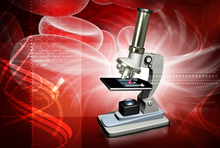In a report from the Harry M. Zweig Memorial Fund for Equine Research at the College of Veterinary Medicine at Cornell University, clinical pathologist Dr. Tracy Stokol gives details about the advanced techniques being used to investigate clotting of blood relative to infectious diseases that cause abortions and neurological disease.

Researching abortions in mares caused by blood clots
A technique novel to veterinary medicine will help Cornell researchers determine whether platelets are activated by EHV-1 infected cells that make up the inner lining of blood vessels causing blood clots.
Unborn foals need proper blood flow to survive and grow. A clot cutting off blood to the wrong place can spell disaster or death. That’s exactly what happens when the infectious disease equid herpes virus-1 (EHV-1) causes abortions and adult neurological disease.
Infected horses can form clots in blood vessels feeding the placenta or spinal cord. No one yet knows why horses with EHV-1 get clots, but clinical pathologist Dr. Tracy Stokol plans to find out by investigating platelets as potential culprits.
Platelets are involved in normal blood clotting, which stops bleeding after an injury. Following injuries, platelets start attaching to blood vessels, become activated, and stick together, helping a clot to form. But this same process that closes off wounds to stop blood flowing where it shouldn’t can also form clots that stop blood from flowing where it should.
“My theory is that EHV-1 is somehow activating platelets to start forming clots and encouraging them to grow,” said Dr. Stokol. “The question is how: is it through direct contact between the virus and platelets, indirect contact with virus-infected cells releasing fragments that turn platelets on, or some combination?”
Using flow cytometry, Dr. Stokol’s lab tested whether certain neurologic and abortion-causing strains of EHV-1 directly bind to and activate equine platelets. Preliminary data suggest they do. Yet questions remain: how does EHV-1 activate platelets? Can we prevent this from happening? Can cells infected with EHV-1 activate platelets that haven’t been exposed to the virus?
A technique novel to veterinary medicine will help Dr. Stokol and post doctoral associate Dr. Wee Ming Yeo determine whether platelets are activated by EHV-1- infected cells that make up the inner lining of blood vessels (endothelial cells).
Using a microfluidic device her lab made in 2010 with help from bioengineer Dr. Michael Shuler, Dr. Stokol made a life-sized model (0.1mm thick) that mimics equine endothelium using living horse cells. By infecting the model cells with EHV-1 and infusing platelets over the cells, her lab can watch the platelets’ interactions with infected endothelium in real-time using digital video microscopy, then analyze the recordings.
“This device lets us examine what’s happening in a life-like environment,” said Dr. Stokol. “If we can show platelets are the missing link bridging EHV-1 infections to the clots that cause EHV-1-related abortions and neuropathy, we’ll have found a new target for therapies.
There are several commercially available platelet inhibitors, such as clopidogrel and aspirin, that could easily be tested for their ability to prevent platelet activation after EHV-1 infection. If effective, these medicines could potentially help change the outlook for infected horses and their young.”
Study Funded by the Zweig Memorial Fund
